Effect of Environment on Cyclic Fatigue of Nickel Titanium Rotary Instruments – An In vitro Study
Citation: AbuMelha AS. Effect of Environment on Cyclic Fatigue of Nickel Titanium Rotary Instruments – An In vitro Study. Ann Med Health Sci Res. 2018;8: 299-303
This open-access article is distributed under the terms of the Creative Commons Attribution Non-Commercial License (CC BY-NC) (http://creativecommons.org/licenses/by-nc/4.0/), which permits reuse, distribution and reproduction of the article, provided that the original work is properly cited and the reuse is restricted to noncommercial purposes. For commercial reuse, contact reprints@pulsus.com
Abstract
Background: During various sterilization procedures of NiTi instruments adversely affect their fracture resistance due to surface corrosion or roughness making them vulnerable to cyclic fatigue. Aim: To evaluate the resistance to cyclic fatigue from repeated cleaning and sterilization procedures on corrosion of NiTi rotary files under various concentrations of Sodium Hypochlorite (NaOCl) and autoclave sterilization. Materials and methods: A total of 60 NiTi files (ProTaper S1) divided into 6 groups (n=10) according to the environment in which the cyclic fatigue test was to be studied were subjected to different methods of sterilization involving autoclaving at 121°C and immersion in 1% NaOCl and 5.25% NaOCl in this study using root canal models (Curved canal, DENTSPLY, USA) simulating a curved root canal. Endodontic rotary files (ProTaper S1) not exceeding 16 mm intracanal length was used under the specified irrigating solutions and repeated till the rotary file fractured. The number of cycles needed for instrument fracture (NCF) was calculated and the NiTi files in each group were further examined under SEM with EDX analysis (S-3500N, Hitachi, USA) for topographical analysis. Results: A statistically significant reduction in the lifetime of the NiTi rotary files was observed with an increase in number of cycles of autoclave sterilization files and increasing concentrations of NaOCl and when used in combination of both autoclave and chemical sterilization. The topographic analysis of the fractured files in all groups exhibited classical signs of fatigue fracture. Conclusion: Clinicians should judiciously use these instruments with respect to repeated and multiple use of instruments that make them vulnerable to cyclic fatigue/fatigue failure rendering these instruments susceptible to fracture within the root canal anatomy leading to otherwise avoidable complications possibly due to cumulative surface corrosion or roughness.
Keywords
Autoclave; Cyclic Fatigue; 1% NaOCl; 5.25% NaOCl; NiTi Files
Introduction
The primary objective of endodontic therapy is to thoroughly clean, disinfect and shape the root canal system to receive a hermetically sealed restoration, while preserving the natural anatomy and contour of the pulp canal system. [1] This chemomechanical preparation (cleaning and shaping of canals) represents an essential part of root canal therapy that makes use of both the mechanical action of the endodontic instruments and the chemical flushing action of irrigants to disinfect the canal and dissolve organic pulpal remnants. [2,3]
Nickel Titanium (Ni-Ti) rotary endodontic files are known for its shape memory and super-elastic properties that enables superior file elastic flexibility and enhanced resistance to torsion (resiliency) for use in root canal treatment in comparison to stainless steel files that were previously used in instrumentation. [4] Despite the increased flexibility and greater resistance to fracture, separation of the nickel titanium (NiTi) file can and does occur, at times within their elastic limit and without visible signs of file deformation, greatly affecting the success of endodontic therapy. [5,6]
During chemomechanical preparation, NiTi instruments get exposed to a wide variety of hostile factors in the endodontic environment such as, repetitive use of instruments, sterilization procedures, exposure to root canal chemical irrigating solutions and chelating agents, [7] etc. can adversely affect their fracture resistance due to surface corrosion or roughness making them vulnerable to cyclic fatigue/fatigue failure rendering these instruments susceptible to fracture within the root canal anatomy leading to otherwise avoidable complications. [8-10]
The aim of this study was to evaluate the resistance to cyclic fatigue of Ni Ti rotary files by repeated cleaning under various concentrations of Sodium Hypochlorite (NaOCl) and autoclave sterilization procedures.
Materials and Methods
Study population and equipment
A total of 60 NiTi files (ProTaper S1) were subjected to different methods of sterilization involving autoclaving at 121°C and immersion in 1% NaOCl and 5.25% NaOCl in this study. The files were divided into 6 groups (n=10) according to the environment in which the cyclic fatigue test was carried out as follows:
Group 1: 10 files as control without being subjected to any form of sterilization
Group 2: 10 files subjected to three cycles of autoclave sterilization at 121°C at 15 psi for 15 minutes
Group 3: 10 files immersed thrice in 1% NaOCl at 30 second intervals
Group 4: 10 files immersed thrice in 5.25% NaOCl at 30 second intervals
Group 5: 10 files subjected to three cycles of autoclave sterilization followed by immersion thrice in 1% NaOCl plus at 30 second intervals.
Group 6: 10 files subjected to three cycles of autoclave sterilization followed by immersion thrice in 5.25% NaOCl at 30 second intervals.
Root canal models (Curved canal, DENTSPLY, USA) simulating a curved root canal, patent to a hand file size ISO 15 [Figure 1] was used to allow for standardization enabling direct comparison and visualization. The transparent acrylic root canal models were prepared by hand files initially till size 20 (Stainless Steel K-Files, Henry Schein, USA) to establish the path and patency. Endodontic rotary files (ProTaper S1) not exceeding 16 mm intracanal length was used in a special contraangled hand piece and motor (X-Smart, DENTSPLY, USA) with controlled torque of 16:1 reduction and 300 RPM for 30 seconds under the specified irrigating solutions and repeated till the rotary files got fractured. The rotary files were cleared of debris by ultrasonication in water bath (Small, Henry Schein, USA) for 5 minutes between every use. The number of cycles needed for instrument fracture (NCF) was calculated by multiplying the time recorded in seconds by the number of instrument rotations or cycles per second. The NiTi files in each group were further examined under SEM with EDX analysis (S-3500N, Hitachi, USA) to view for topographical analysis.
To avoid the observer’s bias, the coding of groups was employed so as to blind the groups to the examiner analyzing the results. The obtained data were analyzed with SPSS software (SPSS version 20.0, SPSS, Chicago, IL, USA) and evaluated with ANOVA.
Results
The mean numbers of cycles needed for instrument fracture (NCF) values for different forms of environment are represented in Table 1. Higher NCF values represent greater resistance to cyclic fatigue.
| Serial No. | Type of Sterilization | N | Mean (± S.D) |
|---|---|---|---|
| 1 | Control (Not subjected to sterilization) | 10 | 1200 (360) |
| 2 | 3 cycles of autoclave at 121°C at 15 psi for 15 min | 10 | 900 (140) |
| 3 | 1% NaOCl at 30 sec intervals three times | 10 | 1050 (260) |
| 4 | 5.25% NaOCl at 30 sec intervals three times | 10 | 784 (170) |
| 5 | 3 cycles of autoclave at 121°C at 15 psi for 15 min and 1% NaOCl at 30 sec intervals three times | 10 | 976 (140) |
| 6 | 3 cycles of autoclave at 121°C at 15 psi & 5.25% NaOCl at 30 sec intervals three times for 15 min | 10 | 626 (280) |
Table 1: Type of environment and mean NCF (S.D) in rotary files.
The number of cycles to failure (NCF) in group 1 was 1200 ± 360. Autoclave sterilization significantly reduced the NCF of endodontic NiTi files in group 2 (900 ± 140) and in combination with NaOCl in group 5 (976 ± 140) and group 6 (626 ± 280). The number of cycles to failure was more pronounced in group 6. Increasing concentrations of NaOCl had increasingly detrimental effects on the life of the NiTi rotary files. Those treated with the 5.25% solution in group 4 (784 ± 170) and group 6 (626 ± 280) was significantly (p<0.05) lower than their counterparts in group 3 (1050 ± 260) and group 5 (976 ± 140) treated under 1% NaOCl. [Table 1 and Figure 2].
ProTaper files in group 3 showed a significantly greater resistance to cyclic fatigue than all other groups (p<0.05). [Table 2] A significant (p<0.05) difference in means between all groups was observed, suggesting a presence of cyclic fatigue in rotary files, based on the type of environment they were subjected to. The topographic analysis of the fractured files in all groups exhibited classical signs of fatigue fracture characterized by small cracks on the plane of maximum shear to a characteristic dimpling feature and fatigue striations. [Figure 3] The distribution of the crack initiation spread deeper in the 5.25% NaOCl than 1% NaOCl without autoclave sterilization. [Figures 4 - 7]. No instrument neither experienced intra canal failure during clinical use nor exhibited plastic deformation due to torsional fatigue during prestressing in the curved canals.
| ANOVA Table | |||||
|---|---|---|---|---|---|
| Source of variation | Sum of squares | d.f | Mean square | F statistics | p-value1 |
| Between Groups | 203.725 | 5 | 40.7451 | 7.1129 | 0.0000357214 |
| Within Groups | 309.33 | 54 | 5.72833 | ||
| Total | 513.055 | 59 | |||
| Chi square | d.f | p-value1 | |||
| Test for equality of variance | 13.2279 | 5 | 0.0213343 | ||
Table 2: ANOVA for difference in means between and within group, cyclic fatigue of rotary files.
Discussion
Ni-Ti endodontic instruments are routinely associated with cyclic fatigue accounting up to 50% to 90% of mechanical failures. [11] In this study, a total of 60 endodontic NiTi rotary files (ProTaper S1) were subjected to different methods of sterilisation using root canal models (Curved canal, DENTSPLY, USA) simulating a curved root canal. The number of cycles needed for instrument fracture (NCF) was calculated for each file followed by examination under SEM with EDX analysis (S-3500N, Hitachi, USA) to view for corrosion.
In this study, a statistically significant reduction in the lifetime of the NiTi rotary files was observed with an increase in number of cycles of autoclave sterilisation files and increasing concentrations of NaOCl and when used in combination of both autoclave and chemical sterilisation. Autoclave sterilization significantly reduced the NCF of endodontic NiTi files in group 2 (900 ± 140) and in combination with NaOCl in group 5 (976 ± 140) and group 6 (626 ± 280), and its effect was more pronounced in group 6. Our findings are similar to that of de Melo et al. [12] who reported a significant reduction of up to 70% following five cycles of sterilisation whereas studies have reported no significant effect of autoclaving on the lifetime of NiTi files. [13-15] The rate of deformation of NiTi instruments under autoclave sterilisation varies from as low as 3.4%3 to 82% and can be attributed to the different models used in the studies. [16]
The influence of autoclaving on cyclic fatigue of NiTi instruments is believed to be due to its effect on the physical properties of NiTi alloy. Repeated autoclave cycles are known to significantly alter the concentration of Ni, Ti, O and C on the alloy surface by oxidation leading to deposition of titanium oxide (TiO2) debris and surface roughness reducing its cutting efficiency by 50%. [17-20]
In this study, a statistically significant reduction in the lifetime of the NiTi rotary files was observed with increasing concentrations of NaOCl. These findings were similar to that of Abuhaimed TS, [21] Berutti et al. [8] and others [22,23] suggesting that chemically irrigated environments adversely affect the cyclic fatigue resistance of the instruments as a result of corrosion effects and possibly galvanic corrosion phenomena that affect the cyclic fatigue fracture resistance. However, the effects of NaOCl on the fatigue resistance of NiTi instruments are in contrast to these findings probably due to different testing and immersion protocols as seen in studies by Darabara et al. [24] O’Hoy et al. [25] and others. [26-28]
In order to get closer to clinical conditions, our study protocol involved subjecting the NiTi files to both autoclave sterilization and NaOCl irrigation under different concentration and immersion times and instrumentation in simulated root canal models.
NaOCl when used as a disinfectant to clean NiTi instruments is believed to selectively corrode Ni from NiTi alloys by inducing a chemical oxidative mechanism triggering the release of aggressive ClO- ions that accelerate the rate of corrosion and can lead to micro-pitting. [29,30] As mentioned earlier, irrigation with NaOCL by themselves do not lead to cyclic fatigue of NiTi files despite immersion for hours and multiple clinical use. [31] However, the micro-pitting induced by them promotes fatigue failure especially when combined with autoclave sterilization. [29]
The topographic analysis of the fractured files in all groups exhibited classical signs of fatigue fracture characterized by small cracks on the plane of maximum shear to a characteristic dimpling feature and fatigue striations. The distribution of the crack initiation was deeper in the 5.25% NaOCl and/or autoclave sterilization in comparison to that with 1% NaOCl without autoclave sterilization. It is reported that the torsional fatigue usually exhibits a smooth fracture surface where small crack initiates on the plane of maximum shear and propagates only in 45° plane. [32-34]
Conclusion
The properties of NiTi instruments were significantly affected following exposure to autoclave sterilization and NaOCl irrigating solutions in the endodontic environment. Clinicians should judiciously use these instruments with respect to repeated and multiple use of instruments that make them vulnerable to cyclic fatigue/fatigue failure rendering these instruments susceptible to fracture within the root canal anatomy leading to otherwise avoidable complications possibly due to cumulative surface corrosion or roughness.
Clinical Significance
The study is of great clinical significance for day to day practice especially for endodontists as well as general dentists. It reveals the fact that the repeated use and sterilization procedures for NiTi rotary files make them vulnerable to cyclic fatigue; hence should be judiciously used to avoid fractures of the rotary files within the root-canals during endodontic treatment of patients.
Conflict of Interest
The authors disclose that they have no conflicts of interest.
REFERENCES
- Schneider SW. A comparison of canal preparations in straight and curved root canals. Oral Surg Oral Med Oral Pathol.1971;32:271.
- Peters O. Current challenges and concepts in the preparation of root canal systems: A review. J Endod. 2004;30:559.
- Stewart GG. The importance of chemomechanical preparation of the root canal. Oral Surg Oral Med Oral Pathol. 1955;8:993-997
- Thompson SH. An overview of nickel-titanium alloys used in dentistry. Int Endod J. 2000;33:297-310.
- Parashos P, Gordon I, Messer H. Factors influencing defects of rotary nickel-titanium endodontic instruments after clinical use. J Endod. 2004;30:722.
- Iqbal M, Kohli M, Kim J. A retrospective clinical study of incidence of root canal instrument separation in an endodontics graduate program: A PennEndo database study. J Endod. 2006;32:1048.
- Anderson ME, John WH, Parashos P. Fracture resistance of electropolished rotary nickel titanium endodontic instruments. J Endod. 2007;33:1212-1216.
- Berutti E, Angelini E, Rigolone M, Migliaretti G, Pasqualini D. Influence of sodium hypochlorite on fracture properties and corrosion of Protaper rotary instruments. Int Endod J. 2006;39:693-699.
- Cheung GS, Shen Y, Darvell BW. Effect of environment on low-cycle fatigue of a nickel-titanium instrument. J Endod. 2007;33:1433-1437.
- Shen Y, Qian W, Abtin H, Gao Y, Haapasalo M. Effect of environment on fatigue failure of controlled memory wire nickel-titanium rotary instruments. J Endod. 2012;38:376-380.
- Sundaram KM, Srinivasan N, Ebenezar RA, Narayanan LA, Rajkumar KR, Mahalaxami S. Comparative evaluation of the effects of multiple autoclaving on cyclic fatigue resistance of three different rotary Ni-Ti instruments: An in vitro study. J Conserv Dent. 2013;16:323-326.
- De Melo MC, Bahia MG, Buono VT. Fatigue resistance of engine driven rotary nickel-titanium endodontic instruments. J Endod. 2002;28:765-769.
- Silvaggio J, Hicks L. Effect of heat sterilization on the torsional properties of rotary nickel-titanium endodontic files. J Endod. 1997;23:731-734.
- Mize SB, Clement DJ, Pruett JP, Carnes DL. Effect of sterilization on cyclic fatigue of rotary nickel-titanium endodontic instruments. J Endod. 1998;24:843-847.
- Hilt BR, Cunningham CJ, Shen C, Richards N. Torsional properties of stainless-steel and nickel-titanium files after multiple autoclave sterilizations. J Endod. 2000;26:76-80.
- Peters OA, Gluskin AK, Weiss RA, Han JT. An in vitro assessment of the physical properties of novel Hyflex nickel-titanium rotary instruments. Int endod J. 2012;45:1027-1034.
- Shabalovskaya S, Anderegg JW. Surface spectroscopic characterization of TiNi nearly equiatomic shape memory alloys for implants. J Vas Sci Technol A. 1995;13:2624-2632.
- Alexandrou GB, Chrissafis K, Vasiliadis LP, Pavlidou E, Polychroniadis EK. SEM observations and differential scanning calorimetric studies of new and sterilized nickel-titanium rotary endodontic instruments. J Endod. 2006;32:675-679.
- Schafer E. Effect of sterilization on the cutting efficiency of PVD-coated nickel-titanium endodonticinstruments. Int Endod J. 2002;35:867-872.
- Rapisarda E, Bonaccorso A, Tripi TR, Condorelli GG. Effect of sterilization on the cutting efficiency of rotary nickel-titanium endodontic files. Oral Surg Oral Med Oral Pathol Oral Radiol Endod. 1999;88:343-347.
- Abuhaimed TS. Effect of environment on cyclic fatigue of ProTaper Next rotary files. Saudi Endod J. 2018;8:117-122.
- Champa C, Divya V, Srirekha A, Karale R, Shetty A, Sadashiva P. An analysis of cyclic fatigue resistance of reciprocating instruments in different canal curvatures after immersion in sodium hypochlorite and autoclaving: An in vitro study. J Conserv Dent. 2017;20:194-198.
- Peters OA, Roehlike JO, Baumann MA. Effect of immersion in sodium hypochlorite on torque and fatigue resistance of nickel-titanium instruments. J Endod. 2007;33:589-593.
- Darabara M, Bourithis L, Zinelis S, Papadimitriou GD. Susceptibility to localized corrosion of stainless steel and NiTi endodontic instruments in irrigating solutions. Int Endod J. 2004;37:705-710.
- O’Hoy P, Messer H, Palamara J. The effect of cleaning procedures on fracture properties and corrosion of NiTi files. Int Endod J. 2003;36:724-732.
- Busslinger A, Sener B, Barbakow F. Effects of sodium hypochlorite on nickel-titanium Light speed (R) instruments. Int Endod J. 1998;31:290-294.
- Haikel Y, Serfaty R, Wilson P, Speisser JM, Allemann C. Mechanical properties of nickel-titanium endodontic instruments and the effect of sodium hypochlorite treatment. J Endod. 1998;24:731-735.
- Demiral M, Keskin C, Inan U. Effect of sodium hypochlorite activated by heating on the cyclic fatigue resistance of one-shape rotary instruments. J Dent App. 2017;4:372-375.
- Stokes OW, Fiore PM, Barss JT, Koerber A, Gilbert JL, Lautenschlager EP. Corrosion in stainless-steel and nickel-titanium files. J Endod. 1999;25:17-20.
- Clarkson RM, Moule AJ. Sodium hypochlorite and its use as an endodontic irrigant. Aust Dent J. 1998;43:250-256.
- Yared GM, Bou Dagher FE, Machtou P. Cyclic fatigue of profile rotary instruments after simulated clinical use. Int Endod J. 1999;32:115-119.
- Cheung GS, Darvell BW. Fatigue testing of a NiTi rotary instrument. Part 1: Strain-life relationship. Int Endod J. 2007;40:612-618.
- Cheung GS, Darvell BW. Fatigue testing of a NiTi rotary instrument. Part 2: Fractographic analysis. Int Endod J. 2007;40:619-625.
- Parashos P, Messer HH. Rotary NiTi instrument fracture and its consequences. J Endod. 2006;32:1031-1043.

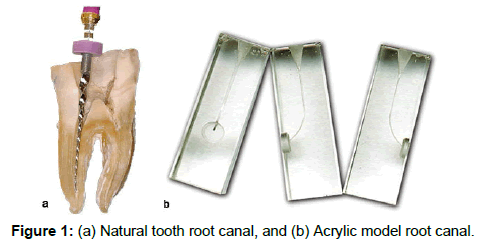
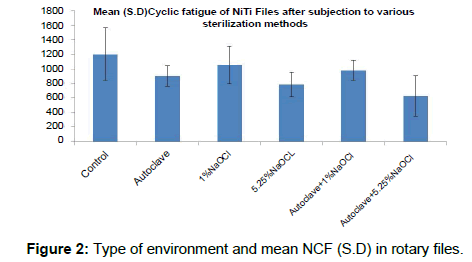
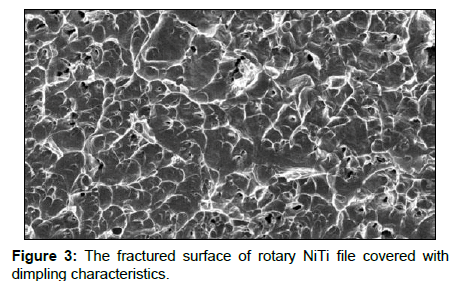
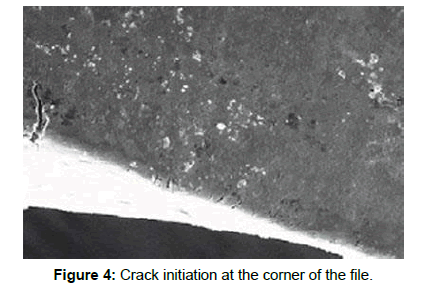
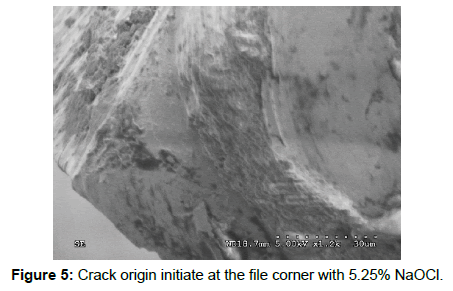
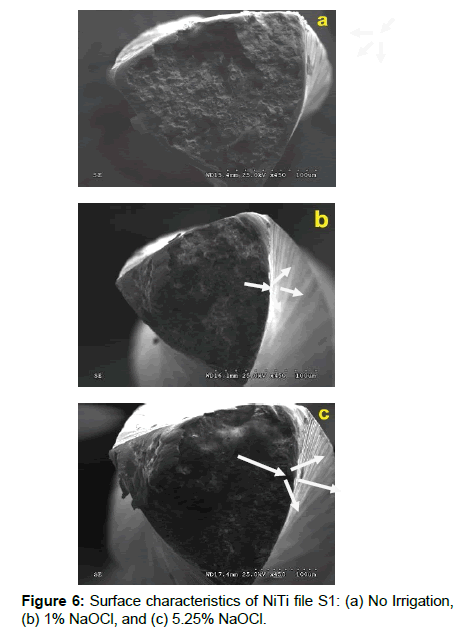
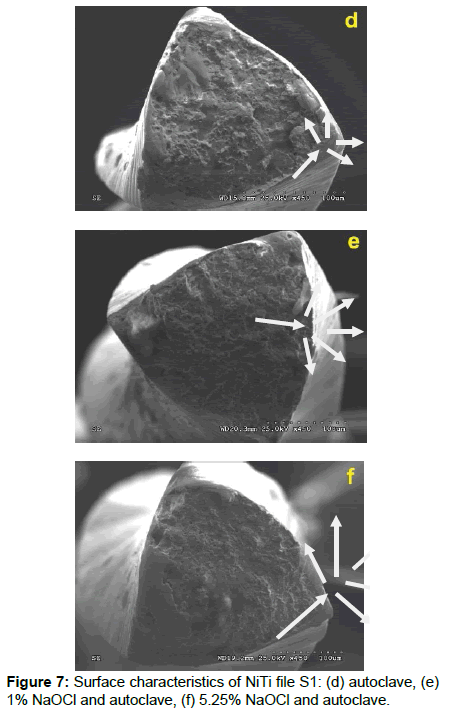



 The Annals of Medical and Health Sciences Research is a monthly multidisciplinary medical journal.
The Annals of Medical and Health Sciences Research is a monthly multidisciplinary medical journal.